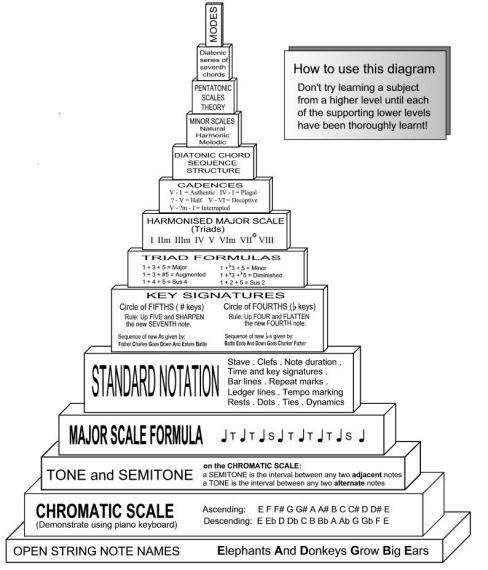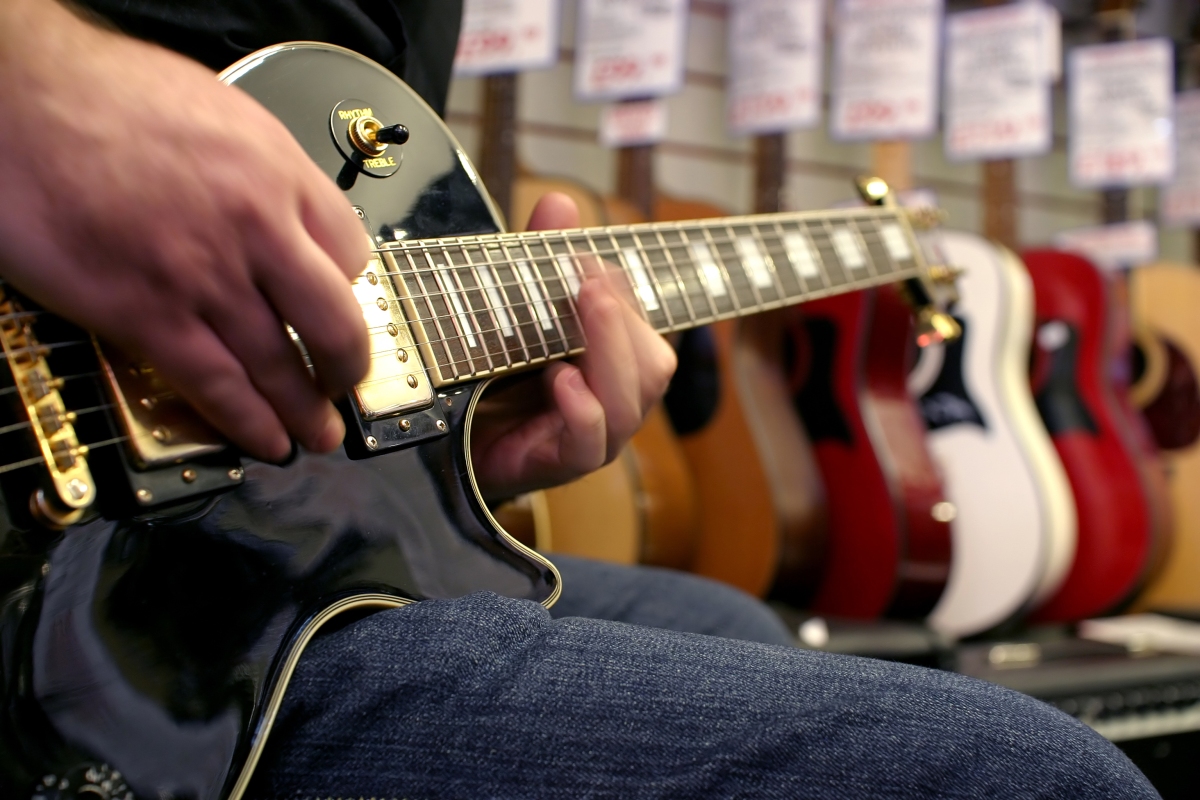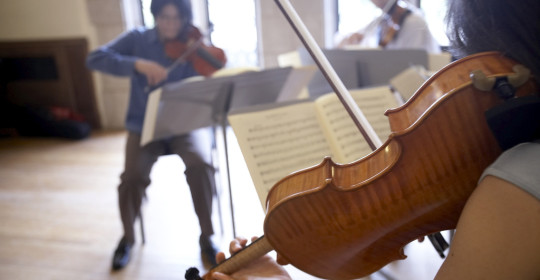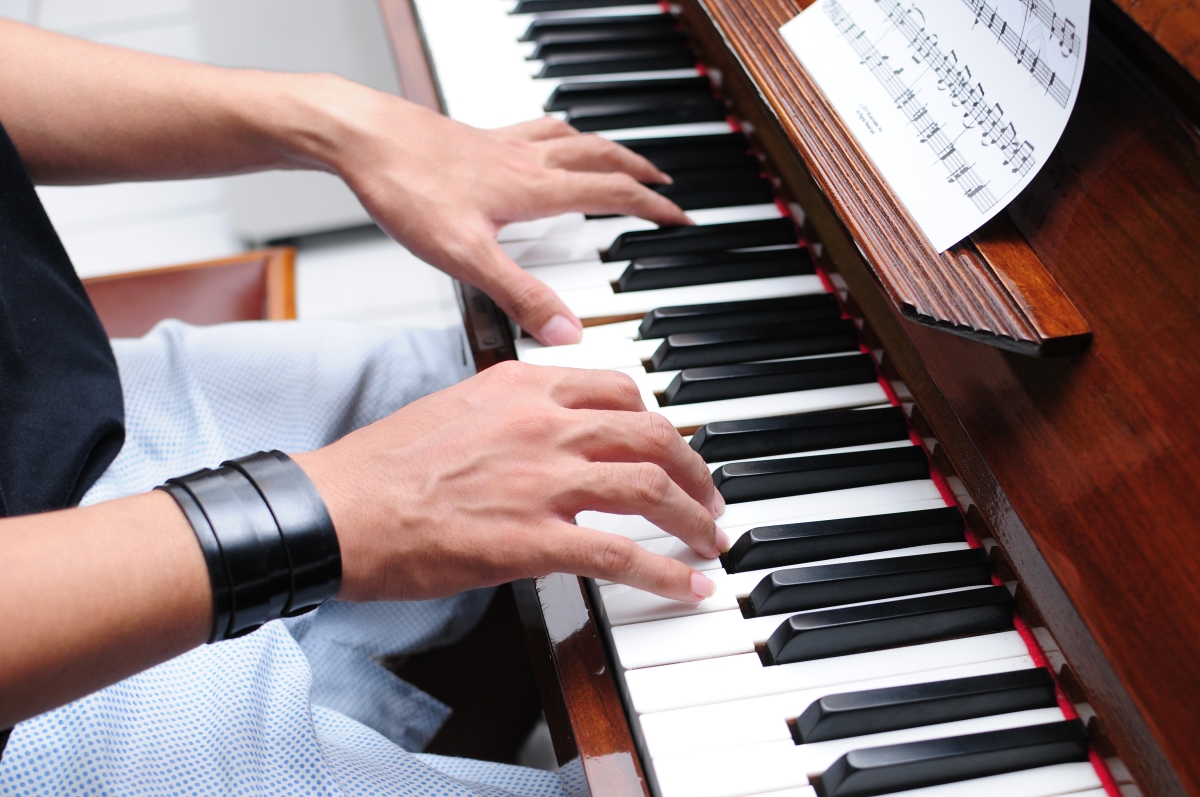Many grade school and middle schools offer music programs in their curriculum. In finding musical instruments shopping places, parents will automatically assume that any music store in town will have a variety of musical instruments that they can rent for the school year. These methods of finding musical instruments have proven challenging to some parents because music stores offer musical instruments for students through rental plans that require monthly payments, that end up with the parent not owning the equipment they are paying for. In finding musical instruments shopping places, they prefer to look for stores that will let them buy the instrument outright. The music stores are very helpful to parents in finding musical instruments shopping places that will allow them to purchase new and used musical instruments but the prices for some of these musical instruments is quite high and parents do not think they can afford them. The cleaning services offered by some of these musical instruments retail on an hourly basis, and the unknown costs lead parents away from buying a musical instrument for their child to use at school. In finding musical instrument places, parents are afforded the opportunity to gain a slight cultural taste of complete collections of musical instruments that are from around the world. They get a history lesson on the development of the musical instruments and find out about famous musician that goto develop their talents on small instruments that are like the ones they are considering buying. There are newsletters at many music stores that offer great places to go and help parents in finding musical instruments shopping places that they can afford. Some of these outlets sell musical instruments that are well below the asking price of the instruments they have found in music stores. These outlets might only offer the musical instrument, with no case or accessories to go with it. In their efforts to locate musical instruments, parents use the Internet in finding musical instruments shopping places that have virtual storefronts, but offer exquisite prices and guarantees onthe quality of musical instruments in their inventories. Some of these online retailers even offer catalogues that parents can order to see all ofthe instruments in their shops.In finding musical instruments shopping places, parents can find those thatfocus on selling the exact instrument that they are interested in, and not be bothered by pictures and descriptions of instruments that their childrenwill never try to play. This exclusivity provides the parents with the opportunity to focus on pricing and differences in the musical instruments offered for their child to use at school. Some prices might differ only a few dollars, and the parents can identify these differences very quickly when the website features only one instrument. They can also take a quick glance at all of the cases, metronomes, and sheet music that is available with each musical instruments. The low inventories make finding musical instruments shopping places that sell only one type of instrument much more convenient for a bargain shopping parent of a promising band student. If you found this post helpful on finding a new instrument, let us know below!Check out our article on how to choose a musical instrument as well here!
40 DIY Sheet Music Ideas
Do you love vintage sheet music or have any laying around at home? We’re sharing 40 DIY projects that you can create with your favorite recycled paper!
As a musician, my favorite recycled paper is sheet music. When I shop at thrift stores or garage sales, I always look for more sheet music so I can keep on creating! If you love sheet music as much as I do, here are 40 DIY projects that you can create, too!
10. Line your dresser drawers with sheet music
15. Make a recycled paper brooch
16. Sheet music desk
18. Handmade sheet music garland
20. Sheet music covered suitcase
21. Upcycled shutter memo board
23. Quick gift idea for a musician
27. Upcycle an old window into a dry erase board
31. Decorate an eco-friendly gift box
33. Spruce up an old jewelry box
35. Decoupage an interior door
37. Create an easy and eco-friendly centerpiece
38. DIY gift bag
39. Simply frame your sheet music
DIY Candle Holder

If you liked this post, check out this eye-opening post if you are practicing correctly or making these same mistakes as others!
From Tempi
Quickly Discover How to Play the Electric Guitar
You can’t learn how to play any musical instrument if you don’t own one specifically when it comes to an electrical guitar. So if you wish to quickly learn how to play an electrical guitar, you must find the ideal guitar to suit your playing style.
When you discover the electric guitar that you enjoy, you can now discover how to play it. As as compared to an acoustic guitar, electrical guitars are mush much easier to play. It would also be best if you can buy a pick, amp and metronome.
As you might have observed, the electrical guitar has numerous buttons or switches and you need to find out all of them. But before anything else, you should understand the essentials in discovering how to play such a musical instrument.
Each type of guitar has its own qualities. You have to familiarize yourself with the electric guitar’s qualities and functions. Know all the guitar’s knobs or switches. You should understand ways to control them so that when you start playing the guitar you will know the best blends of the knobs or switches.
If you can do this, you can expect the guitar’s noise to be at its finest. Electric guitars are not easy instruments. Before you can efficiently play this kind of guitar, you would need to spend a huge part of your time in learning how to play it. Most specifically, you have to discover to mix the tones and sounds together.
Aside from the electric guitar, you also require to get an amp which was already pointed out some time back. Guitar amps are offered in lots of sizes and you require to get the suitable guitar amp. Since you’re a novice, you have to get an amp that you can use during session. Purchase only the very best quality amp and make sure that you attempt it out prior to paying for it. Some shops permit their consumers to check the amps at its highest point. Likewise, remember to purchase an amp that currently has a distortion box due to the fact that this is extremely important when it comes to playing an electrical guitar.
An important necessary to the electrical guitar is the metronome. Metronomes assist artists of any level establish excellent rhythm and develop an excellent foundation for future success.
There are numerous tunes and guitar tracks making use of electric guitars. You require to be familiar with these said tracks so that learning how to play such instrument will be a lot much easier. If you’re a great listener to these guitar tracks and songs, you will discover quickly. Attempt to replicate the noises you hear and if you can do it, then you can tell if you’re finding out.
You can find more strategies, information, and pointers online if you’re determined to learn how to play an electrical guitar. Remember these 3 basics in discovering how to play such guitar: have your very own electrical guitar, get other guitar devices like a pick and amps, and listen to guitar tracks or tunes. If you understand these 3 basics, you’re on your method to learning how to play an electrical guitar.
So you see, you can easily learn how to play an electrical guitar by understanding the essentials. Now its time to choose the method to utilize– whether you will hire an expert guitar instructor, buy a guitar guideline book, or find out through DVD programs and other web guitar programs.
Make certain to select the suitable technique to discover rapidly. Your learning will depend significantly on your character and mindset. If you’re patient, determined, and inspired, you can will not encounter many problems in discovering how to play the electrical guitar.
Now that you have discovered how to choose an electric guitar and begin practicing, check out another awesome post on how to optimize your practice down to 20 minutes or less per day!
Discovering the Fundamentals of the Guitar
-Discovering the Fundamentals of the Guitar
You can buy either a used guitar or a brand new one, depending on whichever you think will suit you best.
As soon as you have actually bought yourself a guitar, you can in fact start taking newbie lessons. Novice lessons are guitar classes taught to newbies so they are familiar with the basics of the guitar and the best ways to play it. The first thing you will be taught is not ways to play the instrument, but what the different parts of the guitar are.
All websites providing online novice guitar lessons start their teachings from this point. This makes good sense because it is not a good idea to find out a musical instrument without very first understanding its various parts. Along with understanding each part of the guitar, you also need to discover the functions of each individual part. Understanding the different parts of the guitar and their functions acquaints you with the instrument.
Standard Actions to Novice Guitar Lessons

After teaching you the different parts of the guitar and their functions, the next thing beginner guitar lessons teach you are the names of the different strings on the guitar. Did you know that guitars do not always have the basic 6 strings? There are guitars that have twelve strings too!
After learning more about the strings, the next step is to discover the different ways you can play the guitar. The number of postures can you think about, where to play the guitar? While you can be imaginative and invent numerous postures, the fundamental postures are standing, and sitting down!
Learning about the postures also teaches you the various grips you can use to hold the guitar while playing. When you are through with these basics, the next thing that you find out in novice guitar lessons is really how to utilize the guitar. This consists of ways to form the different chords, how to strike the strings such that you get the correct sound, etc
. Beginner Guitar Lessons – The Importance of Guitar Theory and Metronomes
Suggestions: Print and Use This Image Out Above!
There is one school of thought that stresses the have to know guitar theory while taking beginner guitar lessons. The reasoning for this is easy: as soon as you know the standard theory, it becomes easier to discover the chords. However, this is not a necessary practice; in fact, numerous online guitar tutorials do away with the need for knowledge of guitar theory as a prerequisite for discovering the chords and other complicated features of the guitar.
Generally, the requirement for guitar theory understanding depends mostly on your level of interest in the instrument. If you are preparing to use up playing the guitar full-time, it makes sense to know the theoretical aspects as well. Nevertheless, if you are taking it up as simply something you want to learn so you can play some of your favorite numbers, then it makes sense to simply go ahead with the online tutorials alone and find out the different chords.
Finally, it is fundamentally important to make use of a metronome to improve your abilities as an artist. Metronomes assist establish rhythm, cadence and develop a terrific foundation for your future musical success. We really suggest the Tempi Metronome as it is the best we have found on Amazon that really delivers amazing quality, performance, beauty, guarantee and ease of use. The Tempi Metronome should be utilized in conjunction with discovering theory and practice. It will help you take your guitar skills to the next level!
Now that you have a solid strategy, it’s time for you to obtain out there and start taking your very own newbie guitar lessons! All the best and don’t give up!
If you liked this post, check out our other post and learn how you can start practicing only 20 minutes a day and still become successful!
All the best 🙂
Tempi
Guitar Lesson – How To Practice In 20 Minutes
Guitar Lesson – How To Practice In 20 Minutes
Using a Tempi Metronome to Become Successful
Many guitarists don’t have enough time to practice for long periods of time. But if you want to progress fast, you need the guitar in your hands as regularly as possible.
It’s better to practice for 10-20 minutes every day, than 4 hours on just one day of the week.Getting into a rhythm of regularly picking up your guitar for a quick practice session is a great habit to get into.
So if you don’t have enough time for a full practice session, and you have 10-15 minutes to spare, here’s some ideas for what you should practice:
Practice a chord change.
Perhaps switching from an F barre chord to a D open is causing you difficulty?
If you spend just ten minutes going over and over the change, you will increase your ability to do it at the level you require.
The key is to focus, and hone in on one skill that you can improve in a short period of time.
Work on a song you want to memorize.
This will give you a chance to actually play some music! You need to have fun in your practice to keep you fresh and focused.
Listen to a song on a CD and jam along.
This is a great way to improve your playing, and it’s particularly suitable for short practice sessions.
An important part of learning guitar is to train your ear, and jamming along to a CD is the perfect way to do it.
Work on a lick you want to learn.
You’d be surprised how many times you can work through a lick in just a few short minutes. You can also combine this practice technique with practicing chord changes.
This will improve your skills in a short period of time.
Work on picking skills – do drills up and down the neck.
You can use your metronome to work on speed picking skills, or you can slow everything right down and work on keeping your body in a relaxed so that you develop an ease to your playing.
Work up and down a scale.
In ten minutes you can play through a scale around 50-100 times. This will improve your stamina and also help you build speed.
Remember to use a metronome when you’re trying to build speed though. Because you want a smooth rhythmic sound to your speed picking, not a struggling, hurried sound. This is the most important part to creating a solid musical foundation.
So build up gradually.
Be Creative!
Play some chords in combinations that sound good to you, or play some single note melodies. Again, this improves your ear and you could maybe work out some parts to a song of your own.
Okay, that’s all the ideas I’m going to give you for now. Use your imagination to come up with more things you could try, and mix it up so it doesn’t get boring.
Also, keep your guitar ready and set-up. Sure, it’s protected all hidden away in your case, but if it’s ready for you to have a short practice session, then you’re more likely to pick it up and practice, even if it is just for a short time.
So keep that guitar out and ready to practice!
You may not think these short practice sessions help much, but doing this builds up your skills fast – and you’ll surprise yourself by how much you improve just be having the guitar in your hands regularly.
However, you don’t want to solely rely on these quick practice sessions. Like most things, you need to strike a balance. A good way of finding that balance is to set a routine.
When you have a routine, you will find it gets easier to find the time for practice. Once you’re in a habit of practicing regularly, you’ll find it harder to break out of, and that’s a good habit to have!
If you liked this post, check out our other exciting post to discover and apply the fundamentals of guitar and theory!
If you have already learned this above, learn how to optimize your practice by reading our superb post here!
10 Easy Ways to Optimize Your Music Practice
These tips are effective for anyone who plays an instrument or sings.
- Find somewhere quiet. This seems too obvious for words, but not only will you be far less likely to succumb to all sorts of distractions, but entering a special practice area, whether it’s a certain room or just a corner of the living room, will help prepare you mentally for this very particular kind of work. Mindful intention is everything, and having the ritual of going to the same place every time can help set that intention.
- Have your supplies nearby. I really love cellist David Finckel’s “Cello Talks” 100-video series on YouTube; you don’t have to play cello to get a lot out of many of them. Some of what he covers seems like impossibly basic advice — as in the discussion (below) of his practice space. Part of his advice is to keep a pencil sharpener and a very clean eraser within arm’s reach, along with a pencil to mark up your music. Simple, right? But those little things are easy to forget, and if you have to go searching for them, add up to a big waste of time.
- Technology can be an amazing aid — as long as you don’t spend too much time futzing with it. Three free or low-cost apps I have on my phone and iPad: a metronome, a tuner and a timer, which are all essential tools for practicing. And I always have my phone with me (see above).
- Begin with the end in mind: Have a goal for each practice session before you start playing. Just playing through your music isn’t the same thing as practicing. Before you start, think: What do I want to accomplish today? If you’re not sure what you need to focus on, ask your teacher for a few concrete goals to work toward before the next lesson — and write them down so that you can refer to them during your practice sessions.
- Map a practice session out like a workout. Use tools like metronome to warm up. Lots of musicians start with a few actual stretches and breathing exercises before they pick up their instruments. Even if you don’t go quite that far, a pretty common scenario is to start with scales as a warm-up, to loosen up your muscles and get your brain thinking about technique; move on to the “working” part where you analyze and try to solve problems; then cool down by improvising or revisiting some music you already know well.
- Practice smarter, not necessarily longer. You’ll probably accomplish a whole lot more in a short amount of time if you have a very focused objective — and science tells us that we have a limited amount of willpower to draw upon anyway. So make the most of the time you have. Say you are having trouble with two very tricky measures. Set your timer for a short period (like five or 10 minutes), and then work just on one problem in as many ways as you can — break it down into even smaller and more manageable bits, go super slow, try to play the passage backwards, change the rhythm, whatever. If that trouble spot is still giving you agita, then make yourself a mental note to come back to that section again tomorrow. Chances are it will be much, much easier the next time around.
- Don’t always start at the beginning every time. Remember what I said about maximizing your time and your willpower? This. It can feel really good to hear yourself playing the beginning of a piece beautifully, but you may wind up wasting the limited time and energy you have. (Also, it leads to performances that start strong and then, well, wilt.)
- Challenge yourself — physically. Especially if you’re trying to wrestle down an element that you find problematic, scientific researchers say that if you add a physical challenge to the difficult task, such as trying to play that part while standing on one leg or while walking, your brain is likely to start carving out new neural pathways — and the original task will be easier when you return to just doing that.
- Practice away from your instrument. Many musicians use visualization in the same way that athletes do: They run through their music without touching their instruments. Try bringing your music along with you (either on paper or a mobile device) when you know you’ll have some downtime, such as during a car or train ride, and read through the piece silently.
- Reward hard work — in positive ways — to help your brain automate good habits. That sounds like out-and-out bribery, but again, science! Finding something that your brain likes helps it remember the “habit loop,” writes Charles Duhigg, author of The Power of Habit.
A quick recap.
1. Find a quiet space,
2. Practice with a goal.
3. Practice smarter, not longer.
4. Challenge yourself physically.
5. Practice away from your instrument.
It may seem simple but this mindset can move mountains, and not just in music.
What would you like to use in this post that could move you towards the life you want?
To your success,
Tempi
All rights go to blog post from: http://www.npr.org/sections/deceptivecadence/2013/09/03/216906386/10-easy-ways-to-optimize-your-music-practice
All image right go to image from: http://music.yale.edu/wp-content/uploads/2013/03/chamber-music-practice-540×280.jpg
Learn to Play Piano in 5 Simple Steps
Many people go through great lengths in learning to play the piano but for some reasons, they are unable to. Well if you like to learn how to play this musical instrument, you can do it in five steps. The piano evokes a lot of feelings when played; you can show anger, romance, anxiety, sadness, and other feelings. Of all the musical instruments of today’s times, the piano is by far the most romantic.
Some people encounter certain problems in learning to play the piano. If you’re one of them, just read the contents of this article and you will learn in no time at all. Here are the five steps in learning to play the piano.

Step 1
Make sure that you have access to a synthesizer or piano. It’s not easy to learn how to play piano. Without the instrument, things will really be hard. A book or piano music is not enough to learn everything you have to know about piano playing. So the first step is to get a piano; you can borrow one or you can purchase a new piano.

Step 2
You have to undergo piano lessons. Lessons are available in different forms. If you want to learn fast, you can combine the different forms of piano lessons. If ever you combine the piano lessons, you have to schedule them so that the lessons will not be mixed up. You can enroll in a piano lesson. You can also use a CD or DVD or even piano lesson books. There are also those who prefer to undergo online lessons. This way, you will learn quickly.

Step 3
Don’t hesitate to ask advice from experts. They are the ones who can recommend the best areas that you can concentrate on. The different forms of piano lessons have different approaches but you will learn a great deal about piano playing. You have to follow every lesson seriously.

Step 4
Practice playing the piano frequently. If you want to learn how to play piano, you have to prioritize your piano lessons. You don’t have to practice all day long. Simply spend ten to fifteen minutes everyday for the practice sessions. Work on the technique by using a metronome. By doing so, you can improve your playing skills. Don’t forget to have warm ups first. You can do this at least four to five times every week.

Step 5
Don’t play advanced pieces as a beginner. You have to start from the simplest to the advanced lessons. You should finish each lesson before you proceed to other lessons. You have to be patient because if not, you will not learn anything. Once you’ve mastered a certain piece, you are now ready to take another piece of piano music. Don’t forget the pieces of you’ve learned in the past. You still have to play them every now and then to retain everything you’ve learned.


Those are the five steps to learning to play the piano. It’s not that difficult, right? You simply have to follow the steps and in no time at all, you will be playing your favorite piano pieces with grace and finesse.
Don’t waste time believing in other tips in learning to play the piano but doesn’t work effectively. Follow these five steps and you can learn to play piano one hundred percent. Soon, you can show other people that you can play well. 🙂







